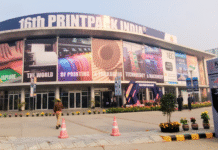The Editors Guild of India organized a webinar titled “Covering the pandemic: challenges and roadblocks” on 17 July 2021. The webinar was live-streamed on the official Facebook page of the Guild. The webinar saw discussions on how the Covid-19 pandemic created a set of never-seen-before challenges for the media when many reporters compromised their personal safety to report the truth to its readers/viewers. The webinar was moderated by Seema Mustafa, president, Editors Guild of India.
K N Hari Kumar, former editor-in-chief, Deccan Herald; Om Gaur, national editor, Dainik Bhaskar; Tanushree Pandey, correspondent, India Today and AajTak; Yogiraj Prabhune, health correspondent, Sakal and Praveen Jain, national photo editor, The Print.
Dainik Bhaskar’s editor, Om Gaur, who led the Hindi newspaper’s coverage of the pandemic including undercounting of the dead due to the virus, claimed that his publication faced obstacles from the government at every stage after they broke the story of the cremation and burial of thousands of deaths along the rivers of Uttar Pradesh. “The publication suffered due to its reporting as the government stopped all advertising”.
K N Hari Kumar who opened the session explained how Deccan Herald covered the pandemic. He pointed out numerous issues from lack of scientific awareness of Coronavirus to the public and private health system of India and negligence of the government in terms of handling the pandemic at its earlier stage. Whereas Prabhune unmasked the reasons behind the mass spread of Coronavirus in Pune, Maharashtra.
Tanushree Pandey, correspondent, India Today and Aaj Tak said, “The most important challenge for the media organization was to keep the reporters safe and to get the story. A lot of freelance journalists were without these necessary safeguards.”
Commenting on his coverage, Praveen Jain, national photo editor, The Print said, “In the last 35 years I have covered the ‘84 Sikh riots, communal riots of ‘92 and the Kargil war, I think pandemic was the most difficult assignment. During reporting for the Kargil war, we were aware of how to keep ourselves safe, what to touch, and whatnot, but this Corona bomb could not be seen as everyone was carrying it on their bodies. The pandemic had forced hotels, guesthouses to close, and we were forced to sleep in our cars while traveling to different places. Even friends and families refused to provide a place to stay.”
Editors and journalists shared their experiences of the pandemic and how it will have long term implications on the media during this hour-long riveting webinar.
















